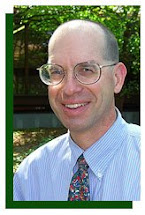 If we read the signs correctly, we might learn something about what is up ahead.
If we read the signs correctly, we might learn something about what is up ahead.Human dimensions, the social and economic aspects of fish, forest, and wildlife conservation, is very useful in trying to understand the past and present. The insights about the past and present can then be used like informational highway signs to make informed decisions about the future.
Past events can guide our thinking about change and provide much insight into the future.
Winston Churchill said “The further backward you look, the further forward you can see” and Harry S. Truman said “The only news you haven’t heard is the history you haven’t read.”
I often turn to a book called The First Fifty Years by James F. Keefe to learn about the past events of the Missouri Department of Conservation and to gain insight into what conservation workers were thinking and the decisions they made in the years before I was even born. I like to think that understanding more about the past can help me, and other Department of Conservation staff, interpret and determine how the information we have available today can help us make more accountable and reliable decisions that will certainly affect the future.
I was fortunate to meet and visit many times with Jim Keefe before he died in 1999.
An article in an All Outdoors news release from 1999, available at http://www.mdc.mo.gov/news/out/1999/091799.htm#2 had the following about Jim:
"Starting as an information writer for the Conservation Department in 1951, Keefe served as managing editor of Missouri Conservationist Magazine from 1955 until 1985. During that time the magazine's monthly circulation increased from 20,000 to nearly 400,000. He penned hundreds of articles and monthly editorials in which he articulated the Conservation Department's philosophy and explained its policies to millions of readers. Conservation Commissioner Ron Stites once called Keefe "Missouri's conservation conscience."
In 1958 the Conservation Commission promoted Keefe to head its Information Section. He continued in that capacity for 27 years, building a public information program that won national and international acclaim for its magazine, books and nature films.
In 1985, the Conservation Commission assigned Keefe to write a history of the Conservation Department's first five decades. The First 50 Years, begins with voter approval of a constitutional amendment in 1936 giving the Conservation Department autonomy in administering science-based conservation programs. It continues through full implementation of the state's conservation program with a dedicated conservation sales tax approved by voters through another constitutional amendment in 1976.
Keefe himself was instrumental in convincing voters of the need for stable funding for conservation programs. At the same time, he also was active in national conservation information efforts. He served as president of Association for Conservation Information and the Missouri Outdoor Communicators and was active in the Outdoor Writers Association of America, earning that group's highest conservation honor, The Jade of Chiefs Award, in 1980.
The Conservation Commission named him a Master Conservationist in 1998, and the Conservation Federation of Missouri honored Keefe with its Conservation Communicator of the Year Award in 1970."
The entire text of The First Fifty Years is available at: http://www.mdc.mo.gov/about/50_yrs/
Read a bit, look backward, and use the information to think about the future. I do.
The current issue of the Missouri Conservationist magazine, and archives of past issues, is available at: http://www.mdc.mo.gov/conmag/
The magazine is free to adult Missourians that request it, and more information about how to subscribe is available at: http://mdc4.mdc.mo.gov/applications/conmag/conmag.aspx

No comments:
Post a Comment